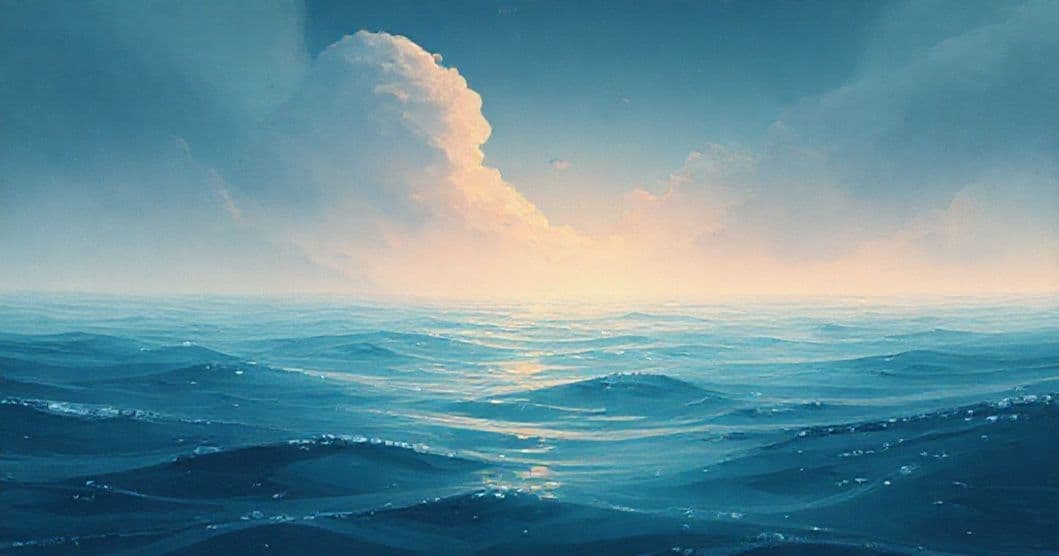Part 1: Dream Presentation
Dreams often serve as mirrors to our unconscious, and for some, certain symbols become steadfast companions across sleep and wakefulness. For this dreamer, water has emerged as an inescapable, recurring presence, weaving through narratives of fear, freedom, and uncertainty. The dreamer describes water as an uninvited yet constant guest, manifesting in diverse scenarios: floating effortlessly beneath its surface, standing on the shore as cars slip into turbulent currents, navigating small boats through choppy waves, and finding ordinary comfort near water in workspaces or pools. Each scene carries emotional weight—the calm of swimming, the panic of sinking cars, the precariousness of boats, and the mundane safety of water’s edge. The dreamer’s clarity in remembering these recurring elements suggests a deep psychological investment in understanding their meaning, while the persistent fear of drowning hints at unresolved anxieties about control, vulnerability, and life’s unpredictable currents.
The rewritten dream narrative preserves these core elements: the omnipresent water, varied scenarios (swimming, flying over, cars slipping, boats/rafts, workspaces near water), emotional states (liberation, panic, dread), and the dreamer’s introspective curiosity about the recurring theme. It expands sensory details and emotional depth while maintaining first-person perspective and chronological flow.
Part 2: Clinical Analysis
Want a More Personalized Interpretation?
Get your own AI-powered dream analysis tailored specifically to your dream
🔮Try Dream Analysis FreeSymbolic Landscape: Water as Archetypal and Personal Symbol
Water stands as one of the most multifaceted symbols in human psychology, representing both the unconscious mind and emotional depth (Jung, 1933). In this dream, water’s recurring presence suggests it functions as a personal archetype—the 'container' of the dreamer’s deepest concerns. Each water scenario carries distinct symbolic weight: swimming or floating indicates a relationship with emotional depth, where the dreamer may be exploring submerged feelings without immediate panic. The cars slipping into water symbolize loss of control—a common dream motif when life feels unpredictable or overwhelming. Boats and rafts, meanwhile, represent navigation and resilience in the face of life’s currents, suggesting the dreamer seeks direction or stability amid uncertainty.
The fear of drowning introduces existential themes: the dreamer’s anxiety about being overwhelmed by life’s forces, or perhaps a fear of losing identity in emotional depth. Water’s dual nature—both nurturing and threatening—reflects the human experience of vulnerability and strength. When the dreamer describes water as 'uninvited yet constant,' it hints at an unconscious awareness of emotions that cannot be ignored, even when they feel threatening.
Psychological Currents: Theoretical Perspectives
From a psychoanalytic lens (Freud, 1900), water dreams often symbolize repressed emotions needing expression. The dreamer’s persistent fear of drowning could signal unconscious anxiety about unprocessed trauma or life changes. Jungian psychology, however, views water as a bridge between the conscious and collective unconscious, suggesting the recurring water imagery reflects the dreamer’s relationship with their 'Self'—the integration of conscious and unconscious parts. The varied water scenarios might represent different aspects of the Self: the calm swimmer (emotional acceptance), the panicked car observer (loss of control), and the boat navigator (active engagement with life’s challenges).
Cognitive dream theory (Cartwright, 2006) posits that recurring dreams help consolidate emotional memories and process stressors. The dreamer’s clear recall and emotional resonance suggest water is processing waking-life anxieties—perhaps related to career transitions, relationship changes, or existential uncertainty. Neuroscience research (Hobson, 2009) notes that REM sleep enhances emotional processing, explaining why water’s threatening scenarios might intensify during periods of high stress or emotional turbulence.
Emotional and Life Context: Waking Triggers and Patterns
The recurring water dream likely reflects the dreamer’s relationship with emotional vulnerability and control. If the dreamer experiences high stress or uncertainty in waking life—such as career pressure, relationship changes, or major life transitions—water becomes a metaphor for these forces. The cars slipping into water may mirror a sense of losing control over circumstances, while boats suggest attempts to 'steer' through difficult times. The mundane water settings (pools, office windows) hint at finding temporary safety in routine, yet the underlying anxiety persists.
Childhood experiences with water may also shape this recurring theme. If the dreamer had positive or negative associations with water (e.g., swimming lessons, near-drowning incidents), these memories could resurface symbolically. The fear of drowning, in particular, often links to unresolved fears of inadequacy or existential threats to identity—a common concern during periods of self-evaluation or life restructuring.
Therapeutic Insights: Working With the Dream
The dreamer can begin by exploring emotional states tied to water scenarios. Journaling about each water scene—when it feels safe vs. threatening—can reveal patterns in waking life. For example, if the car-slipping scenario recurs during work stress, this may indicate the need to set clearer boundaries or seek support for overwhelming responsibilities.
Mindfulness practices focused on breath and body awareness can help distinguish dream anxiety from real-life stressors. When the dreamer notices water imagery in waking life, they might pause to ask: 'What emotion is this mirroring?' This practice fosters emotional literacy, reducing the power of the dream’s anxiety.
Therapeutic exploration could involve examining life’s 'currents': Is the dreamer navigating a new direction (boats/rafts) or clinging to stability (cars)? Water’s persistence suggests it demands attention, not avoidance. Through dream work, the dreamer can transform fear into self-awareness, learning to 'swim' rather than 'drown' in life’s emotional depths.
FAQ Section
Q: Why does water feel both threatening and familiar in my dreams?
A: Water symbolizes emotional depth, so its dual nature reflects the tension between vulnerability (threat) and connection (familiarity). This duality often arises when we’re processing conflicting emotions about life changes.
Q: How can I tell if recurring dreams are messages or just random thoughts?
A: Recurring dreams repeat scenarios with emotional consistency, while random thoughts lack persistence. Water’s omnipresence suggests a theme needing resolution, not randomness.
Q: What if I’m afraid to explore the fear of drowning in waking life?
A: Start small—journal about water’s color, temperature, and your actions. Gradually, this exploration can reduce the dream’s power, replacing fear with understanding.
